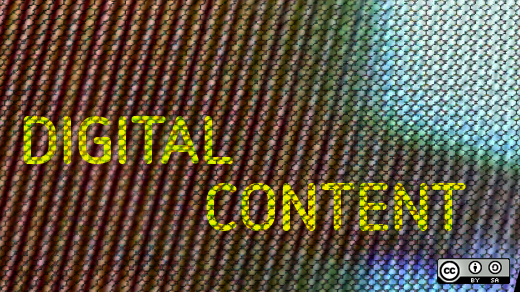 Is anyone out there not a content marketer?
Is anyone out there not a content marketer?
Doug Kessler of Velocity Partners recently shared a slideshow titled, “Crap: Why the single biggest threat to content marketing is content marketing and how building a Great Content Brand will help you survive the deluge.” He reminds businesses that this onslaught of content means that people are increasingly resistant to branding via content. In his words, “It’s inevitable. Marketers are about to experience diminishing returns from our content marketing efforts.”
The solution Kessler defines is creating the “Great Content Brand” (pages 27-28):
Great. ‘Great’ because you aim high and hit the target.
Content. ‘Content’ because this is different from your product or service brands. This is about being known for producing top-notch content.
Brands. ‘Brands’ because a brand is a promise. And a strong brand is built on promises upheld.
A Great Content Brand is a brand that’s famous for producing intelligent, useful and entertaining content that’s always worth consuming.
SixEstate’s co-owner Steve O’Keefe had this take:
So funny and so true — up to the point where you introduce the Great Content Brand. Somehow, because you establish a Brand, your Great Content will survive the Mediocre Content that’s disguised as great content. I don’t buy it. I think the content needs to always be searching for the uncluttered channel. The key to getting your Great Content seen is to find the new channel before it fills with effluent. [Emphasis added]
You might assume this is the point in this blog post where I blindly agree with my boss. After all, the boss/employee relationship can mimic that of creator/content: ownership. Or, at least, that’s the traditional view. I think there is another way to look at the role of content neither Kessler nor O’Keefe discuss.
What if we start looking at content as a co-production? That “great content” exists only when it made in conjunction with the audience? And that “great content brands” will need to incorporate the audience to not just compete but survive?
Let’s boil down the concept into the easy-to-remember shorthand “C.R.A.P.”:
C — “Collaborative Content” Collaborative content is co-created between marketer and audience because active engagement is more memorable, and thus worth more, than passive content consumption. An example would be an e-book where the audience contributes feedback as it is written.
R — “Relationship-Driven” Collaborative content improves and strengthens the existing relationship between co-creators. If an audience cares enough about a topic to collaborate with the content originator (whether that be a marketer specifically or a leader generally) this indicates mindshare and loyalty. Examples range from fan fiction to app development — any place where co-creation exists between content originator and audience.
A — “API” “Application Programming Interface” traditionally refers to technology, it’s also shorthand for content that intentionally courts co-creation. This concept is delightfully explored in Book: A Futurist’s Manifesto, where it is warned, “Open up your api […] or someone else will.” Great content brands are open and should emphasize relational, co-creation.
P — “Participatory Publication” The concept of “publication” is changing radically to include distribution and — again with a nod to software — automatic version upgrades. Content is therefore becoming more fluid and more widely disseminated. An example is buying an ebook — and all the future updates, too.
“Great content brands” need to understand that content is increasingly a living construct that develops between co-creators, strengthens their relationship, invites outside collaboration, and evolves, on a continuum. Blogs are a great start.
I also believe content needs to G.I.V.E. — which is why I’m “giving” Kessler and O’Keefe some C.R.A.P.
Image by Opensourceway.